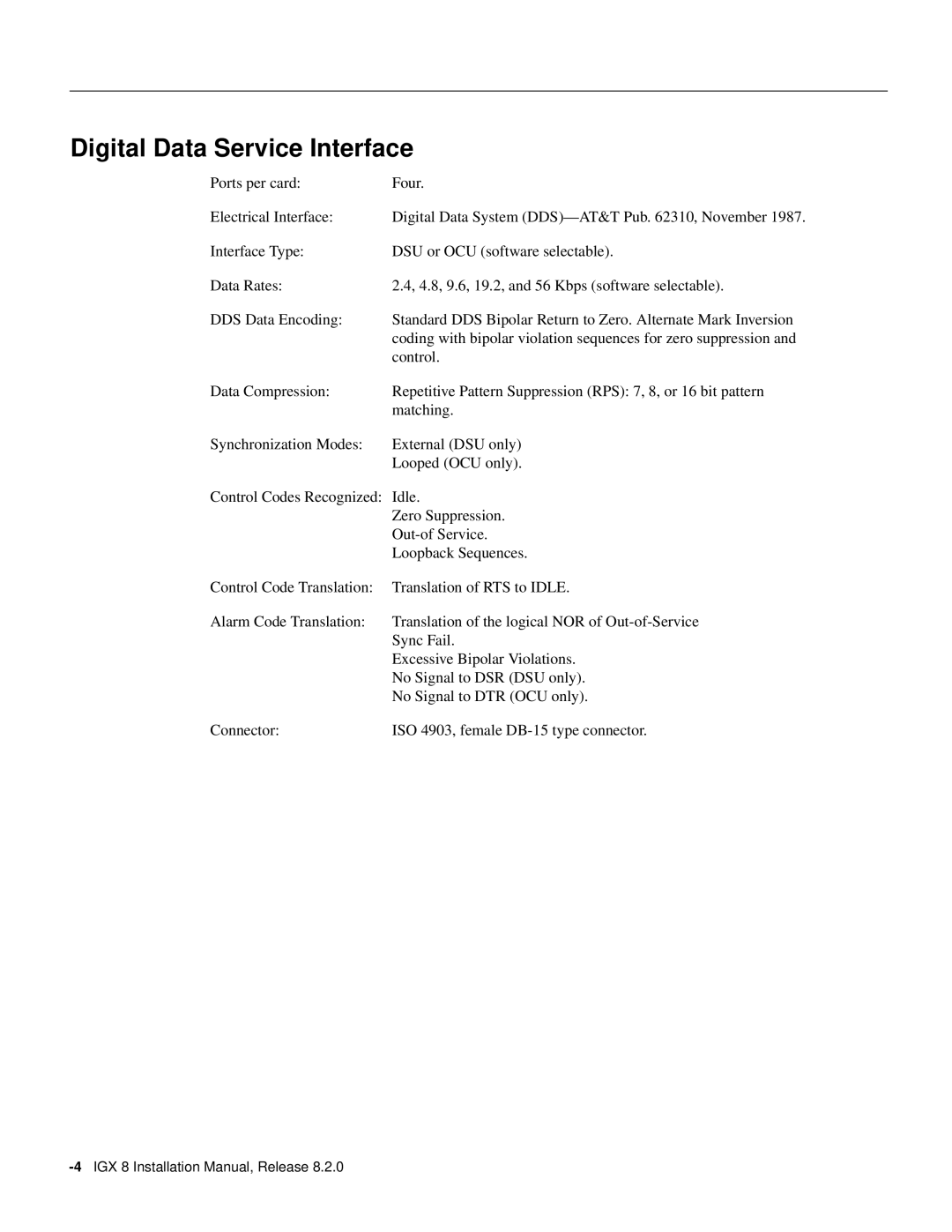IGX 8 specifications
Cisco Systems IGX 8 is a robust and highly scalable communication platform designed to meet the needs of enterprise-level networks. As part of Cisco’s extensive portfolio, the IGX 8 provides reliable data transmission, voice, and video communications over wide area networks (WANs). The IGX 8 is especially recognized for its ability to facilitate large-scale network implementations and multifaceted services.One of the main features of the IGX 8 is its support for multiple protocols. This versatility allows organizations to run diverse types of traffic on the same infrastructure. The system supports Frame Relay, ATM (Asynchronous Transfer Mode), and IP (Internet Protocol) connections, enabling businesses to take full advantage of existing network architectures while accommodating future growth. The IGX 8 supports both voice and data in a unified manner, making it an attractive solution for organizations seeking to streamline their communications.
In terms of scalability, the IGX 8 supports up to 8 T3 (DS3) line cards, allowing for significant data throughput. This high capacity is essential for organizations with extensive bandwidth requirements. Enhanced performance is achieved through intelligent traffic management features, which optimize network efficiency and minimize latency. The ability to prioritize different types of traffic, such as voice over data, ensures that mission-critical applications receive the bandwidth they need.
Another noteworthy characteristic of the IGX 8 is its reliability. Built with redundancy and fault tolerance in mind, the system includes features such as power supply backup, as well as failover capabilities. This signficantly reduces the risk of downtime and enhances operational continuity.
Cisco's IGX 8 also incorporates advanced security features including encryption protocols and network access controls, protecting sensitive data as it traverses the network. This is paramount for organizations that handle confidential information, ensuring compliance with various industry regulations.
Lastly, the user-friendly interface and management tools provided by Cisco simplify the process of deploying and maintaining the IGX 8. Network administrators can easily monitor performance metrics, configure settings, and troubleshoot issues, thereby reducing operational overhead.
Overall, the Cisco Systems IGX 8 stands out as a comprehensive solution for organizations seeking a reliable, scalable, and versatile networking platform that addresses both current and future communication needs.
